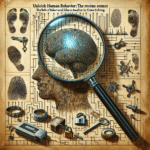
Introduction
In today’s fast-paced, interconnected world, the stakes have never been higher when it comes to assessing and managing threats. From cyber-attacks to natural disasters, organizations must be agile and informed to navigate the complexities that lurk around every corner. This article will detail From Data to Decisions: The Importance of Accurate Threat Assessment, emphasizing that the ability to transform data into actionable insights is not only essential—it’s critical for survival.
Consider the landscape of business and national security—decisions based on flawed threat assessments can lead to severe financial losses, reputational damage, or even catastrophic events. However, by mastering the intricacies of data analysis and threat evaluation, organizations empower themselves to make informed decisions that can safeguard their interests and stakeholders.
The Data Revolution: An Overview
The Proliferation of Data
According to a 2021 Statista report, the global data creation is expected to reach 175 zettabytes by 2025. This influx of data offers a rich tapestry of insights waiting to be unraveled. However, the overwhelming volume can lead organizations to struggle in finding clarity amid chaos.
The Role of Threat Assessment
Accurate threat assessment involves evaluating potential risks that could impact an organization. It’s about understanding vulnerabilities, predicting possible scenarios, and determining the consequences of inaction. When done correctly, threat assessments lead to data-driven decisions that bolster proactive measures, enhance resilience, and protect resources.
Table 1: Types of Threats in Various Sectors
| Sector | Threat Type | Consequence of Inaction |
|---|---|---|
| Cybersecurity | Data Breaches | Financial Loss, Reputation Damage |
| Healthcare | Patient Privacy Breaches | Legal Consequences, Trust Erosion |
| Natural Resources | Environmental Threats | Ecosystem Damage, Loss of Resources |
| Public Safety | Terrorism | Loss of Lives, Increased Fear |
The Process of Threat Assessment
Gathering Relevant Data
The first step in understanding From Data to Decisions: The Importance of Accurate Threat Assessment is the collection of relevant data. This can include internal metrics, external reports, and even social media sentiment analysis. The broader the data range, the more insight you can gather.
Analyzing Data Patterns
Next, organizations must analyze collected data for patterns. Machine learning and artificial intelligence tools can assist in identifying trends that human analysts may overlook. For instance, predictive analytics can signal growing risks before they escalate.
Prioritizing Threats
Not all threats carry the same weight. Some may have immediate consequences, while others are more long-term. Prioritizing threats enables organizations to allocate resources effectively, focusing on the most pressing issues that demand their attention.
Case Study: The Target Data Breach
In 2013, Target faced one of the largest data breaches in history, risking the personal information of over 40 million customers. The incident resulted from inadequate threat assessment and a lack of timely response to early warning signs. Target had collected the data but failed to analyze it properly. They could have recognized the data anomalies, potentially preventing the breach altogether.
Analysis of the Case Study
This case underlines the importance of seamless data tracking and analysis. Here, the lesson is clear: From Data to Decisions: The Importance of Accurate Threat Assessment hinges not only on data collection but also on timely and informed action.
Tools and Technologies Influencing Threat Assessment
Cybersecurity Analytics Tools
Tools such as IBM QRadar and Splunk offer advanced analytics capabilities, allowing organizations to mine data for threats rapidly. With real-time dashboards and alerts, decision-makers can remain ahead of emerging threats.
Risk Assessment Frameworks
Frameworks like NIST and ISO 31000 provide structured approaches to risk assessment. These frameworks guide organizations through identifying, analyzing, and prioritizing risks while effectively communicating findings to stakeholders.
Using Machine Learning
Machine learning algorithms can sift through vast amounts of data more efficiently than traditional methods, pinpointing high-risk areas and forecasting potential crises based on historical data trends.
Challenges in Threat Assessment
Information Overload
One of the greatest hurdles organizations face is information overload. With so much data available, determining which information is actionable can become cumbersome.
Lack of Expertise
Many organizations struggle with a skills gap in their teams, leaving them ill-equipped to interpret complex data sets accurately. Investing in training and hiring specialized staff can help bridge this gap.
Dynamic Threat Landscape
Threats are continuously evolving. New risks emerge driven by technological advancements, shifting social landscapes, and global events. Organizations need a flexible approach that allows for periodic reassessment of threats and strategies.
Real-World Applications: The Military Perspective
Military Intelligence and Threat Assessment
In military contexts, accurate threat assessments can mean the difference between mission success and failure. The U.S. military has long utilized threat assessment frameworks to safeguard national security interests, employing technologies and strategies to assess both foreign and domestic risks.
Case Study: Operation Neptune Spear
Operation Neptune Spear, the mission that led to the death of Osama bin Laden, involved extensive threat assessment. Intelligence agencies analyzed vast amounts of data before executing the mission, demonstrating that From Data to Decisions: The Importance of Accurate Threat Assessment is critical to operational success.
Analysis of Military Application
The military’s rigorous approach to threat assessment highlights the need for collaboration, continual training, and real-time intelligence updates. Organizations can learn greatly from these military strategies.
The Role of Communication in Threat Assessment
Stakeholder Engagement
Communicating threat assessments to relevant stakeholders is paramount. Transparent communication builds trust and improves collective decision-making. It also enables buy-in across different departments, increasing overall organizational effectiveness.
Training and Awareness
Organizations must foster a culture of awareness regarding potential threats. Regular training sessions and updates can ensure that all members understand the risks and the processes for managing them effectively.
Actionable Insights for Organizations
Invest in Technology
Employ advanced threat analysis tools to maximize data collection and analysis capabilities. This empowers organizations to make timely, informed decisions based on comprehensive insights.
Foster a Culture of Continuous Learning
Encourage ongoing education among staff. Regular training on the latest trends and technologies helps keep organizations adept at recognizing and addressing potential threats.
Engage Stakeholders
Improve communication protocols regarding threat assessments, ensuring that all relevant parties are informed and empowered to act.
Conclusion
In conclusion, From Data to Decisions: The Importance of Accurate Threat Assessment cannot be overstated. In an era where decisions hinge on understanding complex and evolving threats, organizations must leverage data intelligently. By establishing robust threat assessment practices, investing in technology, and fostering a culture of continuous learning and communication, organizations can adeptly navigate the modern landscape of risks and opportunities.
Take actionable steps toward refining your threat assessment processes and leverage data to make informed decisions that not only protect your organization but also give it a competitive edge.
FAQs
1. What constitutes an accurate threat assessment?
An accurate threat assessment combines data collection, analysis, and prioritization of threats to inform decision-making.
2. How can organizations improve their threat assessment processes?
Investing in technology, fostering a culture of awareness, and engaging stakeholders can significantly enhance threat assessment processes.
3. What are the common challenges in threat assessment?
Challenges include information overload, a lack of expertise, and a dynamic threat landscape requiring constant updates to assessments.
4. What tools are effective for threat assessment?
Tools like IBM QRadar, Splunk, and risk assessment frameworks such as NIST and ISO 31000 are effective for conducting threat assessments.
5. How does effective communication impact threat assessment?
Effective communication builds trust among stakeholders, encourages collaboration, and ensures everyone understands potential risks and their roles in mitigating them.
Armed with the insights provided, organizations are now better equipped to embrace the critical role of accurate threat assessment in their strategy. Understanding that From Data to Decisions: The Importance of Accurate Threat Assessment is a journey will enable a proactive stance against the myriad of threats faced in today’s world.















